Critics of the Book of Mormon like to dismiss the detailed accounts of Book of Mormon witnesses by saying it’s simply impossible to know today what really went on back then. Were there really plates? Did the witnesses really see or touch anything? Was the translation done with careful notes and manuscripts or really dictated verbally, from a hat? Who knows? We can’t be sure about much of anything regarding the coming forth of the Book of Mormon. It’s all just speculation and group-think from the faithful who may have felt compelled to save face and support the party line.
Non-LDS professor Stephen Prothero in “Revelation Revised,” Wall Street Journal, Oct. 1, 2009, says this of the coming forth of the Book of Mormon:
[T]he scripture that he [Joseph Smith] brought into the world (as translator, not writer,
Mormons insist) was born in an age of newspapers and before a cloud of
witnesses. In fact, before the book was typeset it was drawing defenders
and detractors alike. So we probably know more about the production of
the Book of Mormon, which is holy writ to the world’s 14 million
Mormons, than we do about any other scripture. With the Yale University
Press publication of The Book of Mormon: The Earliest Text last month,
we know even more.
We know extensive details pointing to the existence of the plates, the means of dictation, the dates that were involved, the obviously oral nature of the dictation exactly as Joseph and his scribes claimed (made so clear through the analysis of Royal Skousen, including his The Earliest Text), the time of completion, the seeking of the copyright registration and the seeking of a publisher. Details of what Joseph dictated, what his scribes wrote, and what printers typeset have come to light through painstaking scholarship. As Dr. Prothero said, we know more about the coming forth of the Book of Mormon than we do for any other work of scripture, including detailed, reliable accounts from many witnesses who had nothing to gain over their lifetimes by lying or twisting the truth. Several of the witnesses of the gold plates left the Church and Mormon society, yet insisted to their dying day that they had seen the plates and that they were real and divine. But some witnesses were unintentional or even non-LDS. The unintentional witnesses should also count for something.
The first unintentional witness of the plates was Josiah Stowell, who
apparently took the plates out of Joseph’s hands as he brought them
home. He hefted them and later even stated that he saw a portion of
the exposed plates. See Anthony Sweat, “Hefted and Handled: Tangible
Interactions with Book of Mormon Objects,” in Dennis L. Largey, et
al., The Coming Forth of the Book of Mormon: A Marvelous Work and a Wonder (Provo, UT: Religious Studies Center; Salt Lake City: Deseret
Book, 2015), pp. 43-59 (relevant passage at pp. 48-49), available at https://rsc.byu.edu/es/archived/coming-forth-book-mormon/hefted-and-handled-tangible-interactions-book-mormon-objects.
Another such witness was the brother-in-law of Joseph’s wife, Emma Hale. This non-LDS man, Michael Bartlett Morse (1806-1893), had no affinity for the Church, yet on multiple occasions witnessed Joseph engaged in the translation process, as related in an 1879 interview with W.W. Blair, who was then President of the Reorganized Church. The interview with Blair was published in the Saints Herald, vol. 26, no. 12 (June 15, 1879), pp. 190-91, while Morse was still living. You can read the report of the Michael Morse interview in Larry E. Morris, A Documentary History of the Book of Mormon (Oxford: Oxford University Press, 2019), pp. 267-269, a section which fortunately can be viewed at Google Books. A key portion of the interview is shown in the screenshot below, and the text of the full report follows.
Here is the published text:
Sandwich, Illinois.
May 22nd, 1879.
Editors, Herald:
When at Amboy a few days since, I learned from Mr. Michael Morse,
brother-in-law of Joseph the Seer, (he having married a Miss Hale,
sister to Sr. Emma), some valuable facts in respect to Joseph the Seer
and his work. It should be published that Mr. Morse is not, and has
never been a believer in the prophetic mission of Joseph.He states that he first knew Joseph when he came to Harmony, Pa., an
awkward, unlearned youth of about nineteen years of age. This was in
1825. Joseph then in the employ of a Mr. Stowell, a man of some wealth,
of mature age, and an active professor of religion. Joseph and others
were employed by him to dig for a silver deposit, said to have been made
at some time long previous. Joseph and others of the company boarded at
a Mr. Isaac Hale’s, whose daughter Emma he subsequently married. He
states that the sons of Mr. Hale seemed opposed to and at enmity with
Joseph from the first, and took occasions to annoy and vex him, and
that at one of these times, when out fishing, Joseph threw off his coat
and proposed to defend himself.He states that Joseph told him that he found the gold plates, from
whence it is claimed the Book of Mormon was translated, in a stone box.
(Some of late have said that Joseph at first professed to have found them in an iron box).He further states that when Joseph was translating the Book of Mormon,
he, (Morse), had occasion more than once to go into his immediate
presence, and saw him engaged at his work of translation.The mode of procedure consisted in Joseph’s placing the Seer Stone in
the crown of a hat, then putting his face into the hat, so as to
entirely cover his face, resting his elbows upon his knees, and then
dictating, word after word, while the scribe — Emma, John Whitmer, O.
Cowdery, or some other, wrote it down.Bro. Caldwell enquired as to whether Joseph was sufficiently intelligent
and talented to compose and dictate of his own ability the matter
written down by the scribes. To this Mr. Morse replied with decided
emphasis, No. He said he [Morse] then was not at all learned, yet was confident
he had more learning than Joseph then had.Bro. Caldwell enquired how he (Morse) accounted for Joseph’s dictating
the Book of Mormon in the manner he had described. To this he replied he
did not know. He said it was a strange piece of work, and he had
thought that Joseph might have found the writings of some good man and,
committing them to memory, recited them to his scribes from time to
time.We suggested that if this were true, Joseph must have had a prodigious
memory — a memory that could be had only by miraculous endowment. To
this Mr. Morse replied that he, of course, did not know as to how Joseph
was enabled to furnish the matter he dictated.In speaking of Mr. Isaac Hale and his daughter Emma, he said Mr. Hale
always claimed that he was converted from deism to faith in Christ as
the Savior, by a secret prayer of Emma’s, when she was but seven or
eight years old, which he accidentally overheard when just entering into
the woods to hunt. In the course of her prayer she besought the Lord in
behalf of her father, and the force and efficacy of that prayer entered
into his heart with such power as to lead him to faith in Christ the
Lord.We are glad to be able to say that the Amboy Saints are in the faith and love of Christ. We had large and
attentive audiences to hear us, and we look for a goodly increase in that branch at no distant day.W. W. BLAIR.
Morse’s account supports what other witnesses of the translation process saw. His evaluation of
Joseph’s education is also worth noting, as is the shear implausibility
of the only method he can propose for how Joseph did the
dictation of the Book of Mormon. To his credit, his theory that Joseph
memorized and regurgitated large chunks of text is still frequently
relied on today, though still without a plausible explanation for where
the memorized text came from in the first place. Honestly, if the book
is a fraud from the nineteenth century, someone in that era had to come
up with intricate details like multiple Semitic wordplays or the River
Laman and Valley Lemuel three days south of the beginning of the Red
Sea, then the burial place Nahom/Nehem along a south-southeast trek, and
the existence of a miraculous Bountiful due east of Nahom–so who gave
us those gems and how? Joseph’s awesome memory regurgitating the words
of a secret manuscript writer on the frontier doesn’t get us past 1
Nephi 1.
Update, Feb. 26, 2019: Here are some details regarding Josiah Stowell as a witness, taken from Anthony Sweat, “Hefted and Handled: Tangible Interactions with Book of Mormon Objects,” as cited above:
Josiah Stowell, the First Unintentional Witness
Josiah Stowell claimed he was the “first person that took the Plates
out of [Joseph Smith’s] hands the morning [he] brought them in.”[25]
Thus Josiah Stowell would have been the first witness to validate
Joseph’s claims of obtaining tangible plates. However, although
Stowell’s experience hefting the plates as they were passed to
him—feeling of their weight, mass, and shape—constitutes a witness in
itself, Josiah Stowell also claimed that he saw (albeit
unintentionally) the exposed plates as they were passed to him by
Joseph. Historians Michael MacKay and Gerrit Dirkmaat summarize what
happened:In the summer of 1830, after Joseph Smith
was charged with disorderly conduct, Stowell was called by the defense
and sworn in as a witness. He testified under oath that he saw the
plates the day Joseph first brought them home. As Joseph passed them
through the window, Stowell caught a glimpse of the plates as a portion
of the linen was pulled back. Stowell gave the court the dimensions of
the plates and explained that they consisted of gold leaves with
characters written on each sheet. The printed transcript of the trial
read: “witness saw a corner of it; it resembled a stone of a greenish
caste.” Because Stowell also mentioned in his statement that the record
was made of plates of gold, it is difficult to know what he meant by
this description. He may have seen the band that sealed two-thirds of
the plates together, which may have been made of copper that had
oxidized over the years and turned green. Alternatively, he may have
seen the breastplate, which could have also been made of copper and
appeared green from oxidation. In any case, the point Stowell made to
the court was that the plates were real and that he had seen and felt
them.[26]Stowell thus becomes the first unintentional witness, having an
experience somewhat like that of the formal Eight Witnesses later had as
they were allowed to heft and see the plates.
Footnote 25 cites the letter of Martha Campbell to Joseph Smith, December 19, 1843, Church History
Library, Salt Lake City. The author observes that “Because both Lucy Smith and Josiah Stowell were
present when Joseph handed the plates in at the window, perhaps they
both helped or carried them simultaneously.”
Footnote 26 cites Michael Hubbard MacKay and Gerrit J. Dirkmaat, From Darkness unto Light (Provo, UT: Religious Studies Center; Salt Lake City: Deseret Book, 2015), p. 13.
Update, March 12, 2019: I initially was thinking that Josiah Stowell was also non-LDS, but I apologize for forgetting that he joined the Church in 1830, though did not migrate with the Saints when
the left the New York area. He expressed a desire to go west and be
with them, but circumstances prevented that. He remained a believer in
the Book of Mormon.

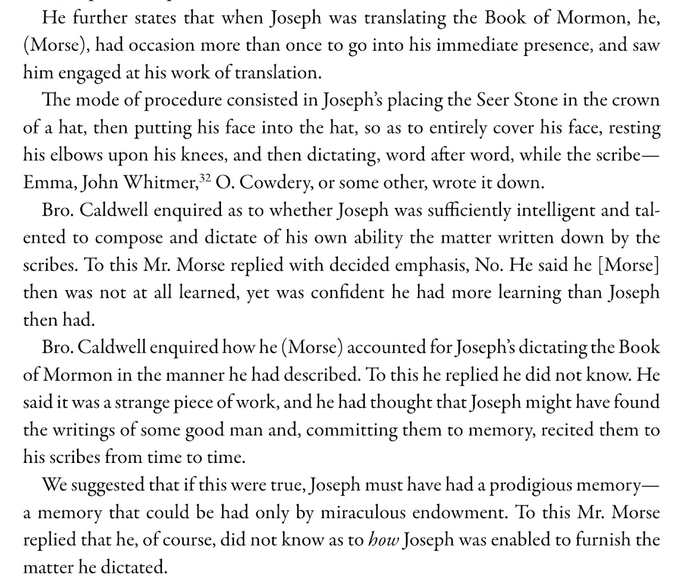

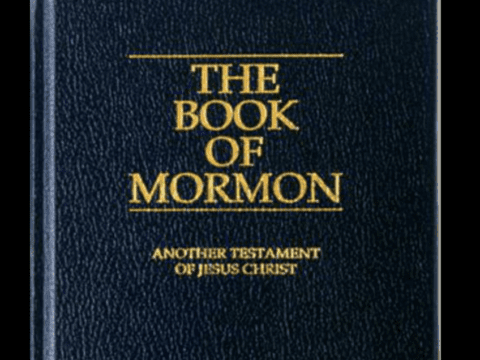

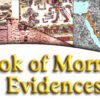

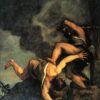

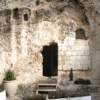
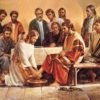
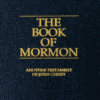
I enjoyed reading this. I had never before heard of these eyewitness accounts before from those who weren't members of the Church. It seems that more and more gems are being uncovered over time as old transcripts are coming to light. If the Book of Mormon was all made up, as its critics propose, one would think that given this continual discovery and uncovering of previously forgotten manuscripts, that someone would discover some indisputable evidence to support this view, but even after almost 200 years, this is not the case.
Thank you for sharing
Sometimes we forget how young a religion the LDS church actually is…
It would be interesting to know how much more we would know about other major religious scriptures if they were produced closer to modernity
Michael Barlett Morse, who was married to Tyral Hale, Emma's younger sister. Michael and Tryal had 12! children.
Who is not awkward at age 19? hahaha
@Anon 10:00 am– wow, 12-factorial children? That's over 479 million. That Tryael Hale was one impressive woman 😉
YAS – yet another strawman
This post actually defends the critics. It is the apologist that originally resisted what the post presents. The post now concedes what the critics longed argued, that the plates were not used in the "translation" and js was inspired by a rock in his hat.
Anon @2:31 sounds like you are good with the description in the article about how the Book of Mormon came about.
Anon @3:05 sounds like you are good with the critic's description about how the Book of Mormon came about and Jeff was wrong to teach his children that Smith "translated" off the plates.
Anon @ 5:55 PM
You are correct. I am good with the historical documents that describe how Joseph Smith translated the plates. Why wouldn't I be?
So let me get this straight. Various people spend countless hours painstakingly engraving lengthy narratives onto metal plates, and Moroni compiles them and lugs the whole weighty collection all the way from Mesoamerica to upstate New York, and then buries it in the ground, then centuries later magically appears before Joseph Smith to tell him where it was hidden so long ago, causing Smith all kinds of problems keeping them from being stolen etc. … all that trouble, just so Smith could then ignore the plates entirely and produce the Book of Mormon instead by staring into his hat and watching the words appear on a peepstone, aka a crystal ball?
And oddly enough the resulting book rehashes the theological controversies of Smith’s own day rather than the issues that might plausibly have concerned a bunch of ancient Jews? And the book encodes that theology in the language of a 17th century Bible translation and an 1823 treatise on Native American origins?
How very odd. How completely, utterly unbelievable.
— OK
It is good to see the apologists now agree with the critics they once hated and reviled.
Are you troubled by the translation of the Dead Sea Scrolls or other ancient documents when you learn that the translators don't necessarily have the original documents before them and sometimes never even touch the original records, but stare into a glowing glass screen to look at an enhanced computer image before coming up with their translation?
The existence of the plates was critical for the Restoration, providing tangible evidence for the reality of the record that would be provided to Joseph via some mechanism perhaps with a glowing device. The steps between engraving the plates and showing the translation to Joseph are unclear to us, but the text is the translation that was on the real, tangible plates, and miraculous evidence was provided that these plates were real and that the power of God was involved in the work. Whether the final translation involved Joseph holding the seerstone over the plates or in a hat to see the translation and read it to his scribes is unimportant. But it is important to know that the plates existed and that they were translated by a gift of God. It is also important to know that we will have them again one day, with much more information ready to be revealed from that miraculous but tangible source.
The use of the hat in the translation process has been in Church publications for many decades such as the Improvement Era in 1939 and the Ensign in 1977, B.H. Robert's writings, publications from FARMS, etc. The details of the Book of Mormon translation still aren't of much interest to many people, and it's understandable that many will continue to assume that the translation was done the way any scholar would translate, by staring at the plates and working things out one line at a time. Instead, the lines were given to Joseph by revelation. If the critics have been saying that, then I'm happy to agree. But I think they've been saying that since the plates weren't said to be explicitly used for a normal translation process, the use of a hat means there was no real translation at all and no plates. But are they unable to imagine why, if the plates are real and the Book is divine, that the existence of the plates would play an important role in establishing the work of the Restoration and tangibly linking the origins of the record to the translation? Seems that way.
OK, you grossly mischaracterize the 1823 View of the Hebrews. Read it yourself and try to show me how that explains any of the details in the Book of Mormon. It's an unparallel.
You also may fail to understand the issues that did concern ancient Jews in the First Temple period. Have you read why Margaret Barker sees validation of her research into the old ways of the Jewish prophets in that era, finding 1 Nephi for example to be highly relevant to her work? It's easy to important your modern views into the text and find comfort in vague parallels to modern issues while overlooking the ancient emphasis on covenant patterns and other themes that we moderns readily miss. It's easy to see a beautiful description of an ancient covenant making ceremony and coronoation ritual and Jewish festival as little more than a modern religious revival if one is unaware of the much richer ancient parallels.
re: Anonymous (10:24 PM, February 25, 2019)
>>How very odd. How completely, utterly unbelievable.
That is a matter of opinion. It doesn't seem odd or unbelievable to me.
The detractors might be surprised by this but I was taught in my 10th grade seminary class that Joseph Smith put his seer stone in a hat to see the English translation of what was written on the plates. I probably heard about the translation process earlier than my 10th grade too, I just remember this detail from seminary.
Thank you for this.
Actions (or lack of action) speaks volumes.
Anon 10:12 – no it doesn't surprise anyone. The fact that it was only in a 10th grade special seminary class you learned of this is the whole point. Why didn't you this since you were 8 years old.
Clinton – if it is not so unbelievable, why aren't missionaries explaining the rock in a hat method to potential converts? If the plates and translation is as important as Jeff insists, then such details are inherently necessary to share.
Jeff – "Are you troubled by the translation" .The critics were never troubled by it, it is the apologist that were and resisted discovering what was burried deep in church publications and sharing it with their children.
re: Anonymous (11:27 AM, February 26, 2019)
>>Clinton – if it is not so unbelievable, why aren't missionaries explaining the rock in a hat method to potential converts? If the plates and translation is as important as Jeff insists, then such details are inherently necessary to share.
Did Jeff say these details are important? I'm not sure I agree. I guess I still need to be convinced about how important these details are to share.
Clinton…
Its vitally important to share these details! Are you kidding me?! Because if you don't share these details, and continue to use language to describe the process, like the word "translate," then you are deceiving people! Even saying "translate by the power of God," isn't enough, because it is to vague. It is just "insider" language.
Translate, to a fully initiated Mormon, no longer means "translate." But to the average person on the street, lost as he is in the darkness of his apostasy, translate" still means "translate!"
It is a common attribute of cults to alter the definitions of words….and the Church of Jesus Christ of Latter-day Saints isn't a cult, right? Or has that changed, too?
EBU
RE: EBU (Anonymous, 12:27 PM, February 26, 2019)
I'm not kidding, and I actually am having a hard time getting it. A current analogue, in my opinion, for what Joseph did is using Google Translate. If I use Google Translate to translate a 5,000 word article from German to English, (as a colleague of mine did a while ago) what word should I use to describe the process?
RE: EBU (Anonymous, 12:27 PM, February 26, 2019)
Incidentally, lots of organizations and social groups have different definitions of words from standard usage. For example, I told a chemistry class today that in chemistry, most pesticides and herbicides are organic compounds.
Clinton…
Google Translate, which starts off with one language and finishes with another language, vs a Rock, which start off with…well…..a rock, and ends with another language….
Anyway…there is already a word for what Joseph Smith did. It's called "channeling." What's wrong with that word? It perfectly describes what he did.
As for your example about words and definitions….not buying it. Organic compounds are a large class of substances, under which herbicides and pesticides can be classified. A better example would be saying, "In chemistry, we call herbicides and pesticides 'food.'"
I am getting worried here…am I at the right party?
EBU
Jeff, I have read View of the Hebrews (it’s quite a slog, almost as much as the Book of Mormon).
Your claim that VotH doesn’t “explain any of the details” of the BoM is beside the point. The point is not that it explains the details but that it explains some of the broad contours, most prominently: expatriated Jews as ancestors of today’s Native Americans, the bifurcation into civilized and savage factions, the long succession of wars, the emphasis on language, the heavy reliance on Isaiah as relevant biblical source, the preaching of the gospel in precolumbian America, and the idea of Native Americans as worthy targets of conversion.
Ethan Smith bears roughly the same relation to Joseph Smith as Holinshed does to Shakespeare. The case for Holinshed’s influence is not undermined by the fact that Shakespeare invents the details in the course of fictionalizing his nonfiction sources.
Your focus on the details tells me you’re unwilling to confront this particular evidence honestly. B. H. Roberts was not so squeamish, and his analysis and conclusion remain as sound today as ever.
— OK
Seems to me the Restoration would have been much better served by a set of gold plates that were not taken up into heaven but remained in the Church’s possession today.
I know, I know—then there would be no need for faith….
But then it seems to me that the need for faith would have been much better served by foregoing the whole apologetic charade of witnesses, Early Modern English, chiasmus, etc. etc. etc.
I mean, if the antiquity of the Book of Mormon can be demonstrated rationally by means of such evidences, then there’s no need for faith, right? And if there’s no need for faith, the plates could just as well have remained here on Earth.
It’s all such a muddle! Almost as if LDS apologetics is just a series of ad hoc rationalizations designed to explain away the evidence and the logic.
— OK
As an interesting note on the whole "different definitions of the same word" thing, to an astronomer studying stars, carbon and oxygen (and anything else bigger than helium) are considered metals, whereas to a chemist carbon and oxygen are pretty much the opposite of metals. I don't know that that proves anything, but I wonder whether the astronomers or the chemists are the cult.
Clinton doth protest too much. What is he afraid of? That people might know the actual details? He may play dumb with himself and pretend the details are not important to him, but he cannot play dumb and pretend the details are not relevant to others. It is basic ethics, full disclosure.
FWIW, there is a lot that I learned in seminary class that I didn't learn when I was 8 years old, sheesh… And I said that I at least remembered the translation process in 10th but that I could have heard about it sooner.
I think OK just compared Joseph Smith to Shakespeare 😀
Steve
They both wrote fiction, so there’s that. 🙂
— OK
Re: EBU Anonymous (1:01 PM, February 26, 2019)
Next time I use Google Translate, I'll be sure to say that I'm channeling the translation.
I don't know anything about any party.
Re: Anonymous (2:12 PM, February 26, 2019)
I fear lots of things, but my biggest existential fear is that I don't really exist. Also, why do you think I'm *playing* dumb? Do you really have any evidence of my intelligence? I'm happy to let others care exceedingly about the details of the translation, even if I don't fully understand why they care.
Re: Anonymous (3:43 PM, February 26, 2019)
I also learned that Joseph used a rock in a hat to translate when I was a teenager. I believe it was in Sunday School.
Clinton writes:
“If I use Google Translate to translate a 5,000 word article from German to English, (as a colleague of mine did a while ago) what word should I use to describe the process?”
Let’s extrapolate your metaphor a little further. Let’s say your colleague used Google Translate to produce a 5,000 word text. Your colleague then provides his text to an audience and let’s them know he used Google Translate to produce it. He then qualifies his statement by letting the audience know that it was the version of Google Translate that came with his pet rock. Also, he didn’t actually feed the text into the rock in any way, the rock just showed him the words to write. How will his audience receive him? He then insists that, not to worry, he also had at his disposal, though he didn’t use them, a pair of Google glasses attached to some hockey shoulder pads. They’re awesome Google glasses from several millennia ago, and he found them in a buried stone box. By the way, if you’re not sure if the translation is correct, just pray about it.
Would you use the word “translate” to describe the process?
re: Anonymous (7:40 PM, February 26, 2019)
Yes. Yes, I would.
Is English your second language?
That technology stuff, it is all magic to me. Maybe that is why they call those glasses magicleap. Somewhere in between magic and a leap of faith.
Lucy Smith was not an outlier. Jonathan Thompson also testified in the 1826 court proceedings that JS's rock told JS that two Native Americans fought over a trunk of treasure they were trying to dig out of the ground. Thompson's testimony of JS never wavered.
That also means that if you believe that JS was not a charlatan and not self-deluded, though no treasure other than the BoM was brought out of the ground, JS did indeed locate buried treasure (just no one ever saw it their natural eyes) inspired by the rock and was telling Native American anecdotes before the BoM "translation", all with the same rock that later inspired revelation.
re: Anonymous (5:30 AM, February 27, 2019)
>>That also means that if you believe that JS was not a charlatan and not self-deluded, though no treasure other than the BoM was brought out of the ground, JS did indeed locate buried treasure (just no one ever saw it their natural eyes) inspired by the rock and was telling Native American anecdotes before the BoM "translation", all with the same rock that later inspired revelation.
Why is that problematic?
Who said it was problematic? Jeff expressed concern about the historical record pre-bom, suggesting Lucy's account was a lone outlier, so you will have to ask Jeff why it is a concern for him.
Joseph Smith: … so anyway, using my magical rock, I have located golden treasure buried on your farm!
Gullible Believer in Folk Magic: Wow! I totally believe you, because I am a gullible believer in folk magic! Honey, give this man a second helping of mashed potatoes—he’s going to make us rich!
JS: Let’s dig up the treasure tomorrow, right AFTER breakfast, okay?
GBFM: Wow, I have so much confidence in this man!
JS (deep in a freshly dug hole, leaning on a shovel): I KNOW the treasure is down here, I SAW it on my peepstone! Problem is, treasure can be SLIPPERY! The demons keep moving it down as we dig! What do you say we get back to digging after you serve me lunch, eh?
GBFM: Wow, demons! Slippery treasure! I TOTALLY believe THAT! Honey, bring this man some lunch!
.
.
.
JS: … and using this magic rock, I have been translating the words on the golden plates I found buried in the ground!
GBFM: Wow! I TOTALLY believe THAT! Can I SEE the plates?
JS: No, but you may heft this box covered with a cloth.
GBFM: Wow, how convincing! That’s good enough for me!
JS: It’s the most important book ever written…
GBFM: Wow! I TOTALLY believe THAT!
JS: … but I’m a little short on cash right now, so I can’t afford to publish it. Could you….
GBFM: Guess what, honey. We’re going to MORTGAGE THE FARM!
—OK
JS (aside): Ka-ching!
re: OK (Anonymous 11:34 AM, February 27, 2019)
What a humorous piece of satire!
Can I play the part of "Gullible Believer in Folk Magic", except for real, and not satirically?
Except, I don't have a farm to mortgage, and my house already is. But I have been giving 10% of my earnings to the church that JS founded since I started working, and I plan to do so for the foreseeable future. Is that good enough?
Fine with me, Clinton. One clarification: you’re tithing to one of the many churches descended from the church Smith founded.
— OK
Re: OK (1:08 PM, February 27, 2019)
>>Fine with me, Clinton.
I appreciate your courtesy.
>>One clarification: you’re tithing to one of the many churches descended from the church Smith founded.
Tom-ay-to, tom-ah-to.
Only in the Church of the Devil do people say tom-ah-to. Heretics!
— OK
Clinton, is it really just a matter of tomayto or tomahto? Because I think it is a matter of "polygamy" or "no polygamy."
Latter-day Saints think their testimony rests on the truthfulness of the Book of Mormon. It doesn't. It rests on the validity of the Polygamy Manifesto. It is the Manifesto that is the defining document of Salt Lake-based LDS, Inc.
EBU
Re: EBU (2:35 PM, February 27, 2019)
I think my testimony rests on whether or not I imagined God's voice, or whether it was real.
But anyway, can't my testimony rely on both? For me, if the Book of Mormon is false, then the Manifesto is also false. But if the Manifesto is false, then that strongly implies I imagined God's voice with regards to the Church of Jesus Christ of Latter-day Saints, which would further invalidate God's voice to me with respect to the Book of Mormon, which is the principle reason I believe the Book of Mormon is true.
It would also invalidate several other things in my life personally, but that's beside the point.
Hi EBU,
It doesn't just rest on the manifesto. It rests on priesthood line of authority after Joseph Smith restored the Church.
Steve
Clinton –
What did God's voice tell you?
You present it as if God's voice told you "The Church of Jesus Christ of Latter Day Saints and the Book of Mormon are true." Of course they are and you should not have needed God to tell you. Jeff says that the Book of Mormon is true does not mean the Catholic church is of the devil. If it doesn't mean that, then it doesn't have to mean that Moroni was a genetic Israelite wonder somewhere in the Western Hemisphere, (but where is not important), with training in metallurgy and an ancient language unknown to modern humanity. The Book of Mormon is true could have just meant that Moroni was a personified character in the Joseph Smith alternate universe. If God told you to participate in the LDS Church, that just means you, it does not mean God wants everyone to participate in that social group.
It does not appear that your testimony depends on whether or not you imagined God's voice. It appears it depends on all the false conclusions you derived from it.
Re: Anonymous (3:31 AM, February 28, 2019)
You are right, my reasoning ability could be faulty. I guess I'll just have to muddle along the best I can. In any case, I'm determined to continue in my belief that "Moroni was a genetic Israelite wonder [sic] somewhere in the Western Hemisphere, (but where is not important), with training in metallurgy and an ancient language unknown to modern humanity."
Clinton – refreshing to here a faithful admit it. What is concerning is your refusal to answer basic questions. As EBU pointed out continuing to hide details to potential converts or current members makes you a participant in deceit, even if those details don't matter to you. You can no longer feign ignorance that these details are important to others.
Re: Anonymous (9:33 AM, February 28, 2019)
When other people ask me questions, I usually try to give them honest answers. People seldom ask me questions, however. I think they get put off by the judgmental vibes I exude.
I may know that some details matter to others, but I still don't understand why those details matter. I've noticed that I have the tendency to brush off details I find unimportant. It's like I naturally assume that everyone must think the way I do, and it's hard to remember otherwise. Another symptom of my arrogance, presumably.
Thank goodness for the gospel Clinton, can you imagine how arrogant would have been without it.
In one of Jeff's many, many strawmen (numerous strawmen is a sign of deceitful person) he States "Recollections decades after the fact that appear as outliers aren't reasonable ways to build a theory for who something was done."
So Clinton, even Jeff at least pretends reasonable ways to build theories should be important to the faithful.
re: Anonymous (9:25 AM, March 01, 2019)
Yes, it is difficult for me to imagine my life in the absence of the gospel's influence.
Um, good for Jeff?
I try to reason as best I can, and be as reasonable in my theories as possible, but that doesn't preclude the possibility that my reasoning ability is faulty. What I'm possibly suggesting is that if my beliefs appear unreasonable, then the probable cause is that I lack the ability to reason properly.
Evidence of Jeff's dis-ingenuousness (I wouldn't call it deceitful, just intentional selective blindness) is his unconditional acceptance of the Michael Bartlett Morse account of Joseph referenced in this article, but dismissal of Lucy Smith's account. The Morse account meets all of the criteria he has put forward as reasons not to believe Lucy's account, but he accepts it at face value nonetheless because it fits his view of how things are or should be.
Anon 12:25 bingo, there is just no point into attempting rational dialogue with jeff, Jeff is just a dishonest version of Clinton
re: Anonymous (12:51 PM, March 01, 2019)
The implication that you assume my honesty is flattering, but what reason have you to do so?
Anon @ 12:24
You're being a bit harsh.
Michael Morse's recounting of the translation process aligns with what many observers recounted. He just happened to have no interest in the Church. Lucy Smith's recollection of Joseph's stories is unique because no one had similar stories to tell so Lucy's story is an outlier. It really isn't a matter of blind acceptance of Morse's witness rather than accepting Morse's witness along with others' witnesses of the translation process.
Having said that, you seem to imply rejection of Morse's story and acceptance of Lucy's story for the very reasons you accuse Jeff of, in that it doesn't align with your conclusions which means you could also be accused of being deceitful.
Steve
Steve – The anon "seem[s] to imply rejection of Morse's story"??? I thought everyone was saying Morse agrees with the critics. Have you been paying attention?
Steve,
I’m looking for consistency. I never implied that the Morse account is unbelievable. I’m merely pointing out that it seems that the rules Jeff has proposed change based on whether the account agrees with his agenda or not.
Joseph’s entire family was aware of the plates, and his community heard the rumors of his “golden bible.” He admits in the Wentworth letter that he had knowledge of Nephite/Lamanite society years before he began the translation process. We know he told stories to landowners of native American treasures on their land in his treasure digging days. Lucy’s account is not an outlier.
I have to agree with Steve here. The Lucy Mack account is an outlier in a way that the Morse account is not. Jeff's consistency is not compromised here.
EBU
So part of the discussion here is about what Jeff thinks is reasonable or not?
On a different note, is it perfectly acceptable for a TBM (such as myself) to believe that the text of the Book of Mormon is an authentic translation of an ancient pre-Columbian New World document, and believe that Joseph Smith had a peep stone that could help him find things, including buried treasure, and that he spent years telling stories about ancient native Americans before he obtained the plates and the translation of them?
-Clinton
Exactly. I’m not sure why Jeff thinks it’s important to try to discount the Lucy quote. There’s lots of other stuff that doesn’t make sense in the whole account—either you believe it or you don’t. The church believed it enough to publish it in official documents for years. Was their spirit of revelation flawed?
<>
Whether it is acceptable or not, I don't know. But what I do know is that this is what ALL Mormons HAVE to believe.
EBU
re: EBU (9:23 AM, March 02, 2019)
You mean they are coerced, like with a gun to their head? It that were the case, then there wouldn't be any Mormons who believed otherwise, and I definitely know one person, who is a Mormon, who doesn't believe what I've outlined above at all.
-Clinton
No…not like there is a gun to their head. There were three items on your list of beliefs. Two are not negotiable. It is a fact that Smith had a stone. It is a fact that Smith told Indian stories. It is not a verifiable fact that the BoM is an authentic history. If your Mormon friend denies the historicity, he is one of a growing number of such Mormons. If he denies either of the other two facts, he is living in a fantasy.
EBU
re: EBU (12:02 PM, March 02, 2019)
My friend denies the historicity. I think he's seriously in error, but that's neither here nor there, and doesn't prevent us from continuing to be friends.
Re: EBU
One additional comment: Are you implying that people don't have the freedom to live in fantasy worlds and believe anything they wish, if they want to?
FWIW, I have been paying attention. Critics and LDS historians agree as to how the translation process occurred.
And yes, Joseph knew of the inhabitants before the translation process because Moroni gave some spoilers. The question is does this knowledge match what Lucy Smith wrote in her biography.
Steve
You mean the LDS faithful NOW agree, because previous the faithful slurreds critics as anti-mormon for suggesting a treasure digging peep stone was used.
The answer to your question is yes, it matches.
"During our evening conversations, Joseph would occasionally
give us some of the most amusing recitals that could be imagined.
He would describe the ancient inhabitants of this continent, their
dress, mode of traveling, and -the animals upon which they rode;
their cities, their buildings, with every particular; their mode of
warfare; and also their religious worship. This he would do with
as much ease, seemingly, as if he had spent his whole life among
them."
Steve, you sound like you are flip flop ping and gone from disagreeing to splitting a hair on "some spoilers" and "most amusing recitals that could be imagined". Why is it so important for you to split hairs? At any rate if you confess " some spoilers" then her account is not an outlier.
Time and again it is the faithful, not the critics, that are force to moderate their position. Whether one believes in divine provenance of the BoM or not, the 116 lost pages anecdote at least suggests that details of the text are not important, but the story theme and outline were enough. Of course the faithful do not believe the story was rehearsed, but the evidence is that the theory of rehearsed is more than Jeff's favorite threshold plausible. The apologist are asking the public to choose between academic, evidence based conclusions and high probability for the merely plausible. At least Clinton is honest and openly admits he is choosing the merely plausible over the highly probable.
re: Anonymous (7:20 AM, March 03, 2019
>> Time and again it is the faithful, not the critics, that are forced to moderate their position.
I dispute that I have moderated my position, since first I took one.
>> At least Clinton is honest and openly admits he is choosing the merely plausible over the highly probable.
That is certainly not the case. In this instance, probability is a matter of opinion. And in my opinion, the probability for rehearsal is vanishingly small. I believe what I believe based on my personal evaluation of evidence. Others will view the same evidence and come to different conclusions, but please do not tell me that I find the evidence that the Book of Mormon is an authentic translation of an ancient New World document recorded on metal plates to be merely plausible, and not highly probable.
-Clinton
Clinton – lol. What a giant flip flop you went from you believe what you believe due to God's voice to a supposed evaluation of evidence.
A person that openly says they don't care what the evidence says, the voice of God told them so, has zero credibility in their supposed assessment of probabilities with regard to the subject matter.
One day, evidence be damned, the voice of God told me so. The next day, despite all parties agreeing at least a portion of the he book of Mormon was inadvertently rehearsed via the 116 pages, a careful review of unnamed evidence says probability of rehearsal is negligible.
Trying to have a rational discussion with Clinton is throwing pearls before swine
To me, the voice of God is significant evidence, so when I use the word 'evidence' I include the voice of God in that umbrella, and I always have.
I don't recall ever having agreed that "at least a portion of the he book of Mormon was inadvertently rehearsed via the 116 pages."
Further, some of you may have made a mistake in assuming that I am even capable of rational discussion.
Is the implication that if Joseph was telling stories about the Nephites to his family, then that means he must have rehearsed some of the 116 pages? I don't understand why that must be so.
You are either dumb or playing dumb. Chemistry teacher means you are not dumb, so you are playing dumb. Playing dumb makes you an insincere person, your insincerity makes it difficult to believe your claims of believe.
The story we now have via a character named Nephi was first told by Joseph Smith via a character named Lehi. So even the millions of faithful acknowledge the story was told once before, only we do not have the details of that story, inadvertently rehearsed. The hundreds of millions of skeptics see “Oh, my God, my God,” Joseph groaned, clenching his fists. “All is lost!” as classic knew jerk human reaction to a self designed master plan of years of planning being upset. We all get you an never going to confess that you understand that seeing it that way is a valid point of view given the objective evidence, but I am sure you will not hesitate to remind us you do not see it that way.
I think what people are trying to point out with the 116 pages is that the reaction and the behavior isn’t what one might expect of someone who is commanded of God to do something. Joseph’s biggest confessed fear is that his enemies would obtain a copy of the manuscript and change some words in an effort to discredit him. Because of this fear he was commanded not to attempt a re-translation. Compare him to Jonah and many other prophets from the Bible. Very few were given an out because they feared what other men might do.
Conveniently, the same story from the 116 pages is told in a different way by Nephi on his record. Step back and look at the psychology of that for a moment. Why is his greatest fear that of being found a fraud? Why would he be afraid of not having the exact same words in a new version of the story if the translation were by the power of God and he was being fed what to say? It would be his word against theirs if someone decided to change the text of the manuscript. Combine this with the neurosis of the book itself, constantly excusing itself for possible faults and the insistence within it that its words are true (seriously, do a search of true and truth and see how many and what type of hits you get). The psychology of the situation points to a fraud being perpetrated.
Exactly Anon 8:12. Even Jeff admits that when something similar happened to Jeremiahh, the expectation was for Jeremiah to reproduce the scripture word for word and Jeremiah did. Also, if such unnamed evil men actually enjoy, as "God's" alternate senario describes, they would have change the 116 pages to contradict Nephi's retelling just as easily. The fact that the supposed unnamed evil men didn't, proves they never existed, and the fact that "God" commits the fallacy proves God is humank like sometimes.
Okay, so the argument is that the 116 pages were a pre-write for the first part of the Book of Mormon as it currently stands?
There are different kinds of intelligence, and just because I can teach chemistry doesn't necessarily mean that I'm very good at, nor does it mean I have training in or an understanding of psychology. I'm kind of sick of people assuming that just because I have an understanding of chemistry that means anything more than that I have an understanding of chemistry.
>> but I am sure you will not hesitate to remind us you do not see it that way.
Bingo.
>>The fact that the supposed unnamed evil men didn't, proves they never existed, and the fact that "God" commits the fallacy proves God is human like sometimes.
See above quoted statement, in that it doesn't prove either of those things to me.
Sorry for being away. Access to this website has been nearly impossible from China for the past few days due to augmented controls of the Internet during a very sensitive time of major political events in Beijing.
Thanks for some excellent comments and great questions.
The Lucy Mack Smith account of Joseph as grand story teller is questionable not merely because it is late, but because it doesn't fit with what others witnessed of Joseph during the days before the Book of Mormon was published and in the years afterwards.
The bulk of her account is fine, and properly reflects a mother amazed at how her non-bookworm son suddenly and miraculously was bringing forth the great work of the Restoration. But the part about his sharing details about the Book of Mormon peoples and "their dress, mode of travelling, and the animals upon which they rode" is something of an outlier. If Joseph shared such details, why are they not in the Book of Mormon? Nobody in the New World rides animals in the Book of Mormon. Details of dress and mode of travelling aren't there (except for the loin cloths of an enemy army and armor for the Nephites). Joseph as a great story teller doesn't fit what others in his family and social circles reported. It doesn't even fit with what we can read in Joseph's own sermons and discourses. His references to Book of Mormon details are scant.
She may have recalling some exciting discussions about the basic revelations he had received about an ancient people and the existence of the Book of Mormon, but the story-telling details she spoke of don't seem reliable. That's not throwing her under the bus, but pointing out an issue with one part of her account. Almost all accounts have gaps and need to be weighed in light of other data points.
Michael Morse's statement, though also late, is consistent with what others saw and reported. He knew enough about Joseph to know of his level of education. He saw the translation process take place multiple times. It took place by dictation — a fact ably demonstrated in many ways. Dictation from Joseph's lips unaided by any visible manuscript. That's significant and supported by many other accounts.
Not true. Her one brief sentence fits other descriptions. But while you are at it, please tell tapir Dan that the BoM doesn't talk about riding animals. Bytheway, did you Nephi's horse's name was untoyou. He is always telling it wo wo.
That's "Beuntoyou" for those more familiar.
In my mind, the reason for Joseph's great consternation at losing the 116 pages was not because he feared being labeled a fraud, but because he was told numerous times not to let such things fall into the wrong hands. He knew what the consequences were, including the loss of his ability to translate. Thus, he rightly declared "All is lost!" He likely felt the spirit leave him alone as surely as did Christ on the cross when He uttered, "Why hast thou forsaken me?" That would have sent him into much greater despair than the fear of anything man could do.
If the Book of Mormon were a fraud and Joseph were afraid of being exposed as a fraud, explain to me why he would invite many people to see and touch the plates?
If it were a fraud, all he needed to do was to present the worked-out final draft when it was ready and have it be published. No need for the painful, tedious, error-prone process of dictating the text hour after hour — without notes or manuscripts, by the way. Why involve scribes and witnesses? Why dictate from a hat without notes? Why spend months on this if a manuscript already existed? Publish ASAP and let the profits roll in. The greatest fear of frauds is being exposed — which is why they tend to eliminate witnesses rather than build large groups of them. And why they try to keep any co-conspirators happy (or dead) rather than excommunicating them and sending them away, angry and bitter.
For a believer seeking to do God's will, messing up and letting something sacred be lost into the hands of enemies should be a horrific setback. You ascribe the worst possible motives to his pain not because that's the best explanation for the pain, but because that's what you want the explanation to be. But try to imagine the response if Joseph were sincerely trying to do God's will but messed up and lost what took so much work to produce.
"but because that's what you want the explanation to be." Look who is talking.
Not sure who the quote is talking too, I for one have no need for the explanation to go either way. Just because you have made up your mind and do not want to be confused by facts and have a confessed emotional bias on the subject, does mean those that see things objectively have a "need" to see things the opposite your confessed emotional way.
Smith had explicit permission from God, that is not messing up, unless of course he didn't have permission.
Jeff, you also seem to confess that the plates presence only served as a form of confidence trick, which should answer the questions you pose. You have now admitted they were not actually used in the "translation". You have already stated the Voree plates are a fraud. Is Juan Diego's tilma also a fraud? If these things are frauds as you propose, then please answer your same questions regarding them.
If the Book of Mormon were a fraud and Joseph were afraid of being exposed as a fraud, explain to me why he would invite many people to see and touch the plates?
Can you explain to me why every instance of Joseph letting people see/touch the plates involved some kind of highly suspicious catch, such as covering them up with a cloth, requiring that would-be witnesses pray earnestly about their existence before being allowed to see them, and so on? Why wouldn't someone in posession of such a treasure simply let people see them in an ordinary, straightforward way?
If anyone ever doubts the existence of my edition of Silent Spring, I can put those doubts completely to rest by letting people see it in exactly the same way they can see their hands in front of their face. I can let people hold it without any kind of covering that might obscure its true nature. I can let people flip through its pages as one would do with any other book, and so on. I would be happy to do this for anyone and everyone, not just my close associates and immediate family. And if people wanted to see the book years later, the last thing I would do is tell people that Hey, trust me, I did have a copy of that book, but you can't see it now because an angel took it up to heaven.
None of this can be said for the gold plates. Their existence was an obvious con.
No need for the painful, tedious, error-prone process of dictating the text hour after hour….
Maybe I'm missing something, but who claimed to have witnessed Joseph dictating the text "hour after hour"?
Jeff, we already know that Joseph lied to people about his ability to find hidden treasure. We already know he lied about the "translation" of the Book of Abraham. Why is it so hard to believe he wouldn't have lied earlier about the Book of Mormon? The man is obviously untrustworthy.
— OK
Why wouldn't someone in posession of such a treasure simply let people see them in an ordinary, straightforward way?
You mean like the Eight Witnesses' experience?
Jeff, we already know that Joseph lied to people about his ability to find hidden treasure.
When?
We already know he lied about the "translation" of the Book of Abraham.
No, critics want to think he lied because it fits their narrative better.
When?
When he told people he could find treasure with his seer stone and people paid him to dig for it. This resulted in court proceedings against him.
As for Abraham, he lied in that the text he claimed to have translated didn’t have anything to do with the source document from which it came. In this he may have been lying to himself instead, believing in his own ability to actually translate. On some level though, you would think he knew that what he was doing wasn’t what he claimed to be doing.
…he told people he could find treasure with his seer stone and people paid him to dig for it.
I'm going to need a source for this, because I can't find anything that supports this claim.
This resulted in court proceedings against him.
No, it didn't. There was a hearing, but it didn't have anything to do with treasure-digging and he was acquitted.
…the text he claimed to have translated didn’t have anything to do with the source document from which it came.
This is a pretty bold claim, considering that we only have about ten percent of the source documents that he used.
For a source about Joseph's treasure digging days, read Richard Bushman's Joseph Smith: Rough Stone Rolling. It's a great resource and the preeminent biography of Joseph.
What's the difference between court proceedings and a hearing? His trial in 1826 had everything to do with treasure digging: "Justice Neely's bill of costs. . .refers to Joseph Smith as 'The Glass Looker.'" He was not acquitted, he was convicted of being "a disorderly person and an imposter," which were the charges against him.
A bolder claim is to say that the remaining 90% of the documents were "translated" any better than the extant 10% were. The ancient texts we have do not have anything to do with the texts that were produced.
Ramer –
Obviously, you are being a massive troll, not massively ignorant. That is ok. While in your own mind you present some sort of great challenge, you are not only easily pushed aside as anon 3:42 demonstrates, but you are barely even noticed.
Ramer said… “I’m going to need a source”: Professional counseling is the best way to deal with your impulsive needs and emotional demands. I have seen commercials for talkspace trying to use modern technology to make it more accessible. Regarding the sources request, before modern technology we would have said go to the library, but as you know simple Internet searches are all you need. Wikipedia is a forum where contentious academic issues are debated and solid references are required. One way those with an agenda attempted to manipulate Wikipedia is by forming a cabal to harass other editors. The Mormons had success with the technique at first, but after years of solid references they were defeated.
https://en.wikipedia.org/wiki/Early_life_of_Joseph_Smith#Treasure_hunting
https://en.wikipedia.org/wiki/Joseph_Smith_and_the_criminal_justice_system
Wikipedia can save you a lot, lot of time reading lengthy books and putting the pieces together. For example, you appear to be confusing the 1830 and 1826 Bainbridge trials. But you are correct, the narrative that Joseph Smith created in 1838 and included in LDS canonized scripture doesn’t match what is now considered academic fact, even by the vast majority of modern apologists and Jeff.
With regards to the “Abraham” facsimiles, while we only have one original, we have all the facsimiles, which academics, who know little about Mormonism and have no agenda regarding Mormon narratives, say Joseph Smith’s translation is far off and no better than random chance. But the fact you suggest these academics are involved some sort of massive conspiracy pretty much says it all.
We all see that your definition of “simply” and “straightforward” are way different than the rest of humanity’s, but we can patiently help you work through any of the above…
You know, Mormography, I used to be upset by the comments you made about me and my character, but now I find them hilarious because they are so far away from what I actually say, think, and intend that (like the common insinuation that Latter-Day Saints supposedly worship a "different Jesus") I can only think you're criticizing a different Ramer.
This bit, however, takes the cake:
Ramer said… “I’m going to need a source”: Professional counseling is the best way to deal with your impulsive needs and emotional demands.
You heard it here first, everyone: asking for a source for a claim is an emotional demand and an impulsive need that needs to be treated with counseling. Someone had better inform all the Wikipedia editors that remove unsourced material that they're in dire need of counseling.
Oh, and speaking of those Wikipedia articles: they point out that while certain sources do indeed claim Joseph Smith was found guilty and fined in court, other sources throw doubt on this allegation.
Ramer –
As usual, when caught red-handed you try to change the subject.
Wikipedia is exactly the placed to required a source for controversial claims. Demanding others educate you on basics, in a forum that is not an encyclopedia, solely so you can mentally soothe yourself regarding established academic facts that ceased being controversial years ago, is definitely an emotional demand you clearly struggle to control. I agree that humor may be the best approach to your inability to control yourself.
You made no attempt to explain to anon 3:42 how a hearing is not a court proceeding, because, as you know, you were just being a troll. Your suggestion that Joseph Smith’s narrative of being merely a hired hand to swing a shovel is not even accept by most apologist. He was hired to lead treasure location that was never located, the motivation to court proceedings, something no longer in dispute, expect for the rare person such as yourself struggling to deal with the facts.
Moving on to your change of subject. Both anon 3:42 and you are wrong about conviction or acquittal in the 1826 hearing, after all it was a preliminary hearing and not a trial. Smith confessed to glass looking. Smith wasn’t about to confess that he didn’t have glass looking ability in front of the people that believed in him. Having confessed, the Judge essentially explained to Smith that he would be convicted by a three-judge panel if the case went to trial. Having mercy, the Judge agreed to not proceed to trial (therefore no acquittal or conviction) if Smith turned from his treasure seeking ways and got out of dodge, which Smith did. Had he not, it may have gone to trial.
Seeing as you ignored anon 3:42 when he provided you a source and I do not need to babysit your emotional needs, I am not going to do any more of your homework for you, but you might also try reading http://signaturebookslibrary.org/joseph-smith-the-making-of-a-prophet/
Jeff said … "He [Stowell] remained a believer in the Book of Mormon."
Stowell never denied his testimony of Joseph Smith, Samuel Lawrence, Seeress Odle, or his faith in scrying. If we are going to tell the story, let's tell the whole story.